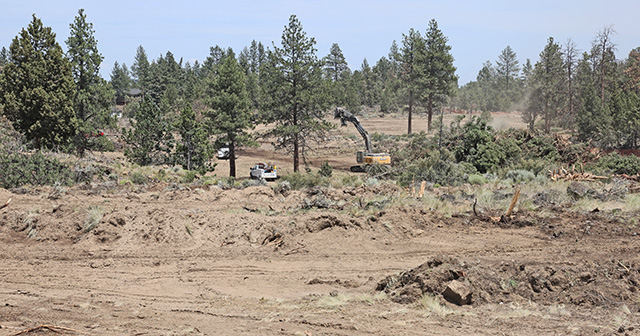Pitching at altitude remains a riddle for the Rockies
Published 5:00 am Wednesday, March 27, 2013
SCOTTSDALE, Ariz. — The quotation on the bulletin board above Bill Geivett’s desk here describes the mindset of the Colorado Rockies. It comes from Lou Holtz, the former Notre Dame football coach, and encapsulates the defiance the Rockies may need more than any other major league team.
“I don’t care who questions our ability to succeed,” it reads, “as long as they aren’t members of this team.”
Only the Rockies can truly understand the punishing reality of playing a mile above sea level, the central challenge that has shaped their 20 years. Geivett, a senior vice president, has been with the team since 2000 and is the son of a meteorologist. Yet atmospheric conditions remain a mystery.
Last year the Rockies had a 5.97 earned run average at home and a 4.41 ERA on the road. The 1.56 difference was the widest since the team installed a humidor to store baseballs at Coors Field in 2002. The humidor is supposed to prevent baseballs from drying out in the low humidity. But on their way to a franchise-worst 64-98 record last season, the pitchers went haywire.
“People tell you the air was really dry, and the number of fires in the state of Colorado are certainly evidence of that,” Geivett said. “Maybe that played into it; I don’t know. I don’t have any idea.”
Really, though, Geivett has lots of ideas. He formally assumed responsibility of the major league team last summer, with general manager Dan O’Dowd concentrating on the farm system, and said the guiding principle was that the Rockies should play the same way at home as they do on the road.
But as they try, the Rockies have spent years devising strategies that do not apply to other teams. Should they field a team of sluggers who launch balls into thin air, or a team of speedsters to patrol the wide outfield gaps? Should they sign established, free-agent pitchers, or build a staff from within?
Early last summer, they put into practice an idea percolating for more than a decade: a four-man rotation with a 75-pitch limit for starters.
“In some ways, it was cool being out there more often,” the veteran Jeff Francis said. “Three days’ rest, it felt like you were pitching more. But as starters, you pride yourself on going deep in games and being a horse. That was hard to adjust to.”
The Rockies, who lost four of their initial five starters because of injuries or ineffectiveness, did not adapt well. They have scrapped the plan for 2013, and expect to employ a traditional five-man rotation, with one wrinkle: they will carry three long relievers, not just one.
But the experiment did leave a mark, historically. Rockies starters worked only 765 innings, the fewest for any team in a nonstrike season, according to research dating to 1900 by the Elias Sports Bureau. Francis led the team in innings with just 113, and no Rockies pitcher reached double digits in wins or losses. The team had only 27 quality starts (minimum six innings, maximum three earned runs). The next lowest team, Minnesota, had 62.
“We knew there’d be some backlash to doing this, and people would feel like it’s not the way to go — maybe the majority of the people,” Geivett said. “But we were proving to everybody that we would try to do whatever we needed to do to win, and that’s what that was all about, putting ourselves at a better competitive advantage.”
The idea symbolized the philosophical differences between the front office and manager Jim Tracy, who resigned after the season. But it stands as a bold attempt, if a brief and desperate one, to combat some troublesome trends in pitching.
Francis, the No. 1 starter on the Rockies’ 2007 World Series team, said the rigors of pitching at altitude could be taxing on the shoulder. Maybe it would help, the Rockies believed, to have pitchers working more often while eliminating the pitches they throw while tired.
Statistics supported that philosophy, to an extent. The major league batting average against a starting pitcher the first time through the order, in 2012, was .250. The third time through the order, that figure rose to .272. Even in a five-man rotation, new manager Walt Weiss said, those facts are important to remember.
“The numbers are alarming,” Weiss said. “That’s one of the thoughts behind that philosophy, just keeping an eye on that. It doesn’t mean you’re going to pull a guy every time before he gets to the third time, but just have an awareness of it.”
Ultimately, Geivett said, the plan fell apart largely because the pitchers had to reduce their bullpen work between starts, often throwing only 10 or 15 pitches per session. Younger, less refined pitchers tend to need longer sessions to improve.
The Rockies’ top four projected starters — Jhoulys Chacin, Jorge De La Rosa, Juan Nicasio and Francis — are unimposing, but all have had some success in Denver, and the hope is that they will normalize the home/road disparity this season.
Other teams have issues, Geivett said — the Chicago Cubs play the most day games; the Seattle Mariners log the most air miles; and so on. He would not use the word “frustrating” to describe the riddle of Denver baseball.
“It’s interesting,” Geivett said. “At this point, I guess I’m one of these old war-horse baseball guys, but to be in professional baseball 25 years or whatever it is, and to be in a situation a lot of people don’t have to contend with, it really is fascinating.”
Last season was a good year, Geivett insisted, because the failure in the standings allowed the team to evaluate itself honestly. He would not share all of his conclusions, but chances are we will see them on the field soon enough. If a team is willing to use a four-man rotation with a 75-pitch limit, it will not be afraid to try anything.







